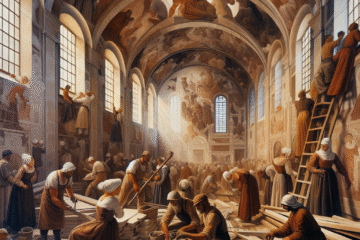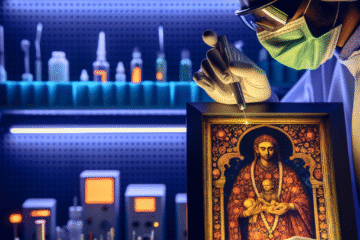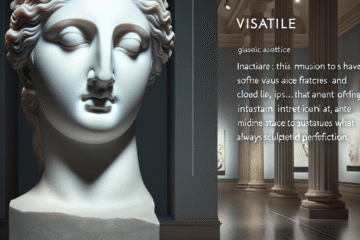Introduction: More Than a Mirror
From the early days of art history, self-portraiture has been a means for artists to assert their presence, but for women, the self-portrait was—and remains—a revolutionary act. When society offered them narrow roles and limited visibility, a canvas became a stage for renegotiating identity, power, and autonomy. This article journeys through time to uncover women who used self-portraiture not just to depict themselves but to challenge conventions, redefine femininity, and seize control of their own narratives.
1. Renaissance and Baroque: The First Brushes of Resistance
During the Renaissance and Baroque periods, artistic production was mostly dominated by men, and women artists had circumscribed access to training and exposure. Yet figures like Sofonisba Anguissola (1532–1625) and Artemisia Gentileschi (1593–c.1656) broke through these restrictions. Anguissola, a noblewoman from Cremona, portrayed herself with humility and scholarly grace, asserting her capability in a male-dominated space. Gentileschi, a survivor of sexual violence and an accomplished painter, used her self-portraits not only to showcase her technical mastery but also to reclaim her agency. In a time when women’s bodies were subjects rather than authors of art, their self-representations functioned as subtle acts of defiance, crafted within and against the limitations imposed on them.
2. Enlightenment and Romanticism: Artistic Identity and Personal Narrative
As Enlightenment ideals emphasized individuality and reason, women artists such as Élisabeth Vigée Le Brun (1755–1842) began to redefine the professional identity of the female painter. Le Brun, who painted Queen Marie Antoinette numerous times, also created intimate self-portraits that showed her in the act of painting, aligning herself with creativity rather than mere beauty. These portraits subverted the traditional ‘male gaze’ by asserting the presence of a woman who produced culture instead of just adorning it. During the Romantic era, introspection and emotional depth took center stage, offering women a new arena to explore personal identity. Their representations began to include symbolic and psychological dimensions that reflected inner turmoil, intellect, and ambition.
3. 19th to Early 20th Century: Modernism and Methodical Subversion
As the 19th century turned towards modernity, industrialization and social upheavals stimulated new aesthetic expressions. Women like Berthe Morisot, a founding member of the Impressionist movement, included herself marginally in some of her domestic scenes, subtly integrating presence within prescribed roles. But it was in the early 20th century that female self-portraiture took a radical leap. Frida Kahlo (1907–1954), perhaps the most iconic example, fused indigenous Mexican culture, personal suffering, and political thought into arresting self-portraits that boldly interrogated gender, identity, and colonialism. Her visual honesty and surrealism were both aesthetic and existential, marking a departure from traditional beauty and a move toward self-exploration as liberation. Simultaneously, photographers like Claude Cahun blurred gender norms through staged self-portraits that forecasted queer theory decades before it existed.
4. Post-War and Feminist Art: The Personal Becomes Political
The postwar era saw the rise of feminist movements that changed the course of art history. Artists like Cindy Sherman in the 1970s and ’80s turned the self-portrait into a study of identity roles and media representation. Sherman’s filmic self-portraits, where she transforms into different personas, questioned the authenticity of images and the performative nature of femininity. Simultaneously, Ana Mendieta merged photography and performance to explore ethnicity, exile, and eroticism through her ‘Silueta’ series. In this era, technology—notably advances in photography and video—enabled new modes of self-representation, allowing women artists to fragment, multiply, and reimagine identity beyond the canvas. These self-portraits were no longer merely reflections; they were battlegrounds of ideology, sexuality, and self-determination.
5. Contemporary Explorations: Digital Identity and Virtual Bodies
In the digital age, self-portraiture continues to mutate. Artists such as Amalia Ulman use Instagram as a medium to critique social media’s impact on female identity in her performance series ‘Excellences & Perfections,’ blurring the line between authenticity and artifice. Meanwhile, contemporary painters like Toyin Ojih Odutola push the vocabulary of self-representation to include race, class, and narrative multiplicity on a global scale. Technology has democratized image-making, and with it, artists expand the self into avatars, augmented realities, and data-driven portraits. In this fragmented mirror, the female self becomes fluid and reflexive, a process of constant construction rather than a fixed display. What unites these diverse practices is the enduring impulse to assert, interrogate, and rewrite the visual narrative of womanhood.
Conclusion: The Canvas Is Hers
Across centuries and media, women artists have used self-portraiture as far more than personal representation. It has been a vehicle of resistance, a laboratory of identity, and a silent revolution against marginalization. As each brushstroke confronts public gaze and private introspection, one thing becomes abundantly clear: these portraits are not pleas for recognition but declarations of sovereignty. In every era, the message echoes—’Paint me as I please.’

Image description:
“Self-Portrait, Yawning” by Joseph Ducreux (French – Google Art Project)
License:
Public domain
Source:
Wikimedia Commons


